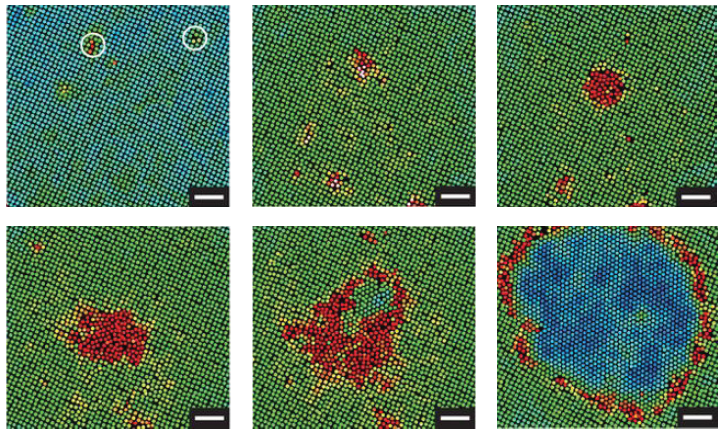Phase Transition Matters

One of the fundamental questions in physics is how matter changes from one state to another. The rearrangement of carbon atoms is essentially the underlying mechanism of the transformation from soft black coal to rock-hard crystal-clear diamond, while the melting of ice cubes into liquid water also signifies the reorganization of H2O molecules. These basic phenomena have piqued the curiosity of soft condensed matter physicist Prof Yilong Han and his team for the past decade.
Borne out of his long-held fascination with physics and curiosity about the principles behind, Prof Han’s research into matter encompasses four big categories of transitions—“Solid-to-Solid”, “Solid-to-Liquid”, “Liquid-to-Glass” and “Crystal-to-Glass”. The urge to demystify such transitions has led to his breakthroughs in these realms of knowledge—exploring the kinetic pathways and the mechanisms by which matter transitions from one solid phase to another. He achieved the first microscopic observations of both surface pre-melting and internal homogenous melting, performed the first experiment on colloidal glass composed of non-spherical particles to discover various structure-dynamics correlations relevant to the transition from liquid to glass, and harnessed simulations to become the first to find a point of differentiation between ultrafine-grained polycrystals and glass at a surprisingly large margin.
Prof Han’s discoveries have resulted in groundbreaking insights, which have intrigued physicists globally and can assist in the development of new materials and optimization of existing ones, essentially adding a further exciting order of magnitude to the matter.
Prof Yilong Han is Professor of Physics at HKUST. He received the International Organization of Chinese Physicists and Astronomers Achievement in Asia Award in 2014, and the Chinese Young Scientist Award in 2016, for his research contribution to the understanding of phase transitions.